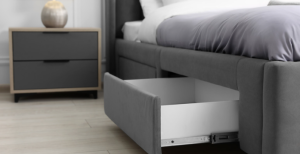How to Choose the Right Colour Palette for Your Room: A Beginner’s Guide
Choosing the right colour palette for a room can seem overwhelming, but it’s one of the most impactful decisions you can make for your home! The right colours can create a cosy atmosphere, make a space feel larger, or even energize a dull area. Whether you’re redecorating or just starting fresh, this guide will help you choose the perfect colour palette for your room, complete with examples to inspire you!
Step 1: Consider the Room’s Purpose
Understand the Mood You Want to Create
Different rooms serve different purposes, and the colours you choose can enhance those functions:
– Living Room: Aim for warmth and comfort. Colours like soft browns, warm beiges, or gentle greens can create a welcoming environment.
– Bedroom: Think about relaxation. Soft blues, muted purples, or gentle greys promote tranquillity and sleep.
– Home Office: You might want energy and focus. Consider brighter colours like yellows, greens, or even a bold accent wall in a deep blue.
Step 2: Choose Your Base Colour
Start with a Base
Your base colour is the main colour you’ll use in the room, often for the walls. This should reflect the mood you want to create:
– Neutral Base: If you prefer flexibility, opt for neutrals like white, beige, or Gray. These colours provide a blank canvas for you to add pops of colour with accessories and furniture.
– Bold Base: If you’re feeling adventurous, consider a bold colour like navy blue or forest green. Just make sure to balance it with lighter accents to avoid overwhelming the space.
Example: Neutral Base
For a modern living room, you might choose a warm Gray as your base colour. This sets a calm tone and allows you to play with vibrant furniture and décor.
Step 3: Create an Accent Colour Scheme
Add Accent Colours
Once you have your base colour, think about accent colours that complement it. A good rule of thumb is to use the 60-30-10 rule:
– 60% Base Colour: This covers the walls and large furniture.
– 30% Secondary Colour: This can be a slightly bolder colour found in smaller furniture, curtains, or rugs.
– 10% Accent Colour: Use this in décor items like cushions, artwork, or vases for a pop of colour.
Example: Accent Colours
If your base colour is warm Gray, you might choose a rich mustard yellow as your secondary colour and a deep teal as your accent colour. This combination adds warmth and interest to the room.
Step 4: Consider Colour Combinations
Classic Colour Schemes
There are a few classic colour combinations that work well together. Here are some popular ones:
– Monochromatic: Different shades of the same colour create a sophisticated and cohesive look. For example, light blue walls with navy blue accents.
– Analogous: Colours that are next to each other on the colour wheel, like blue, teal, and green, create a harmonious and calming effect.
– Complementary: Colours that are opposite each other on the colour wheel, like blue and orange, create a vibrant and energetic look.
Example: Analogous Scheme
In a dining room, you might choose a soft green base with accents of light blue and deeper teal for a fresh, serene vibe.
Step 5: Test Before You Commit
Sample Swatches
Before you paint an entire room, get sample swatches and test them on the walls. Observe how the colours look at different times of day with varying lighting. This will help you see how colours can change and which combinations feel right in the space.
Example: Testing Colours
If you’re considering a pale lavender for the bedroom, paint a small section of the wall and see how it looks in the morning light versus evening. You may find it looks different than you expected!
Step 6: Don’t Forget About Furniture and Décor
Incorporate Existing Elements
When choosing your colour palette, consider the colours of your existing furniture and décor. You can use them as a guide for selecting complementary colours.
Example: Coordinating Colours
If you have a dark wood coffee table, choose colours that contrast well with it, like soft cream or muted blues. This will enhance the overall look without clashing.
Conclusion
Choosing the right colour palette for your room doesn’t have to be stressful! By considering the room’s purpose, starting with a base colour, adding accent colours, exploring different colour schemes, testing before you commit, and incorporating existing elements, you’ll create a space that feels just right.
Remember, colours can dramatically change the mood and feel of a room, so take your time to find what resonates with you. Happy decorating!



